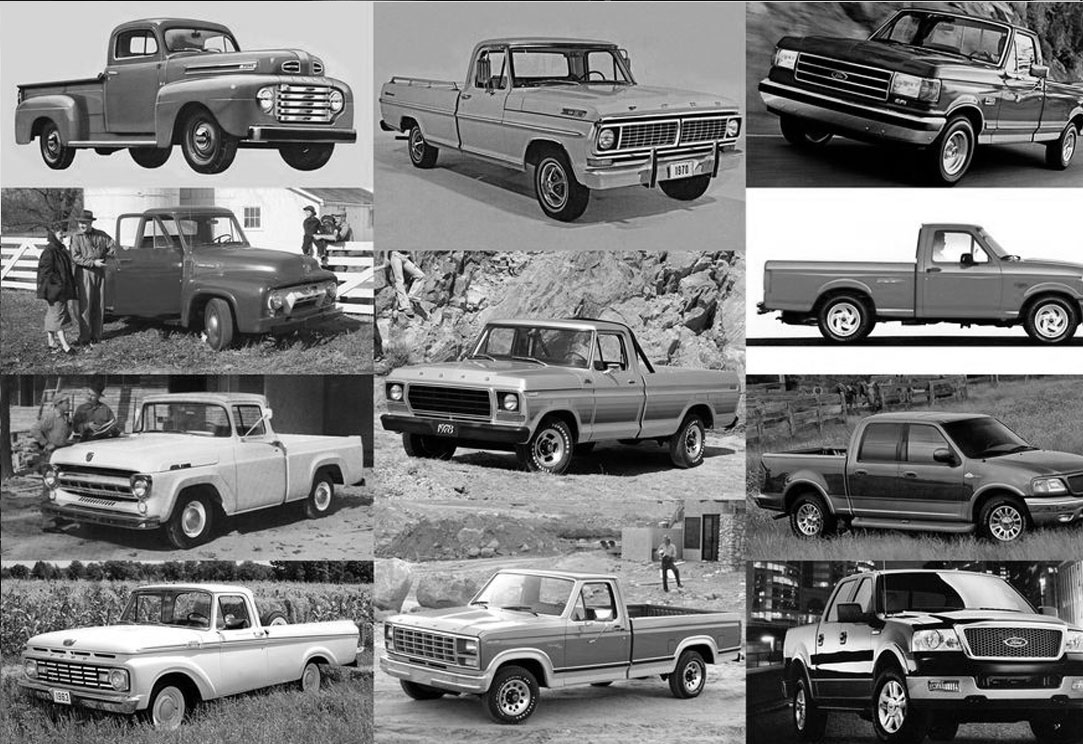Henry Ford is credited with creating the first factory-built pickup truck as well as coining the term “pickup” itself. It all started with the 1925 Model T Roadster with Pickup Body, which Ford created after noticing that many farmers were modifying their Model Ts to help with their work in the fields. Ford even had a 1912 Model T with a cargo box on his own farm! Interestingly, coachbuilders and Ford dealers had already been offering pickup bodies for years before the factory got involved, and by the time it did, the Model T was nearly obsolete and was ultimately replaced by the Model A in 1928, but before that happened, Ford sold roughly 135,000 Model T pickups. Marmon-Herrington, a component supplier, began converting Ford pickup trucks to four-wheel drive in 1935, but the first production four-wheel drive pickup was 1946’s Dodge Power Wagon, which was originally developed for the war effort and was essentially a military truck fitted with civilian sheet metal. The Willys-Overland Jeep pickup truck, also a four-wheel drive model, arrived just one year later and was also an adaptation based on wartime innovation. The famous Ford F-Series got its start around the same time with 1948’s F-Series Bonus Built Truck. By the late 1950s, four-wheel drive had become the standard for pickup trucks. Thanks to their blend of maneuverability and utility, forward-control pickups had a moment in the 1960s, but demand quickly grew for conventional pickup trucks. As more people moved off farms and into suburban areas, demand for pickup trucks with more amenities grew. The first pickups to remove the distinctive rear fenders that had been the stylistic standard since the 1920s were the 1955 Chevrolet Cameo Carrier and its GMC Suburban counterpart. Coupled with two-tone paint and lots of chrome, this change gave the trucks a more car-like appearance suitable for suburban living. The cabin was also updated with two-tone upholstery and new amenities like double sun visors and armrests. Of course, the price of the pickup truck increased with all of these new features, but the design was relatively successful and other manufacturers soon followed suit, including Ford and Dodge. By 1960, pickup trucks all had smooth sides with conventional steel bodies. Car-based pickups like the 1957 Ford Ranchero and 1959 Chevrolet El Camino emerged in the 1960s and persisted for a few decades. The first crew-cab pickup, the Travelette, was introduced by International Harvester in 1957 and featured a three-door design with a full back seat and room for six people (a fourth door was added in 1961). Ford and Dodge rolled out their own crew-cab pickups shortly after. Originally, the utilitarian vehicles were mostly purchased by utility companies and contractors, but soon more amenities were added and the general public began to buy them, too. The first extended cab pickup truck was 1973’s Dodge Club Cab. On the other side of things, compact pickups also found their way onto American streets after being imported from Japan — the first was the Datsun 1000, which arrived in the U.S. in 1958, followed by the Toyota Stout in 1964. Compact mini-pickups were popular throughout the 1970s and American manufacturers quickly jumped on the bandwagon, although none of them were as successful as Datsun and Toyota. Muscle trucks hit the scene in the 1960s with the Dodge Custom Sports Special, but didn’t become popular until 1990’s Chevrolet Silverado 454SS and Ford’s 1993 SVT Lightning were released. In 2004, Dodge joined in with its Dodge Ram SRT-10. The Toyota Tundra and Nissan Titan debuted around the same time. Today, pickup trucks remain a very popular vehicle choice due to their hauling power, versatility, and space (enough to accommodate passengers and plenty of cargo).

Your go-to guide for weird history facts
Subscribe to the FREE daily email that makes learning about history fun.


